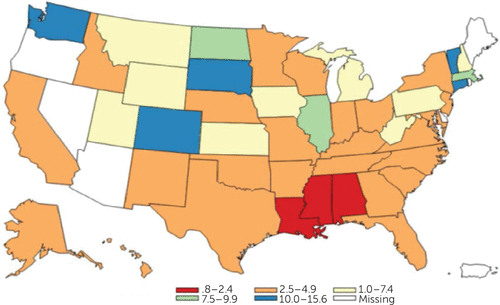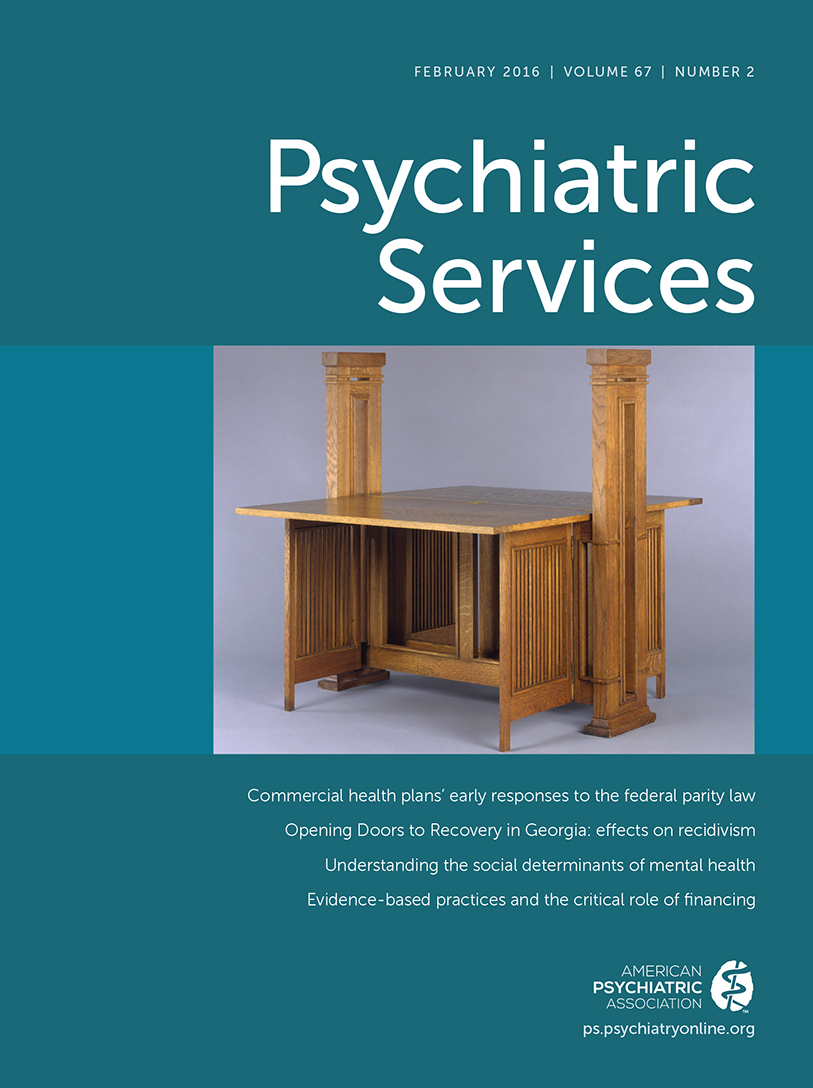Clozapine for Schizophrenia: State Variation in Evidence-Based Practice
Clozapine is the only antipsychotic with known efficacy in treatment-resistant schizophrenia. Although 20% to 30% of individuals with schizophrenia have treatment-resistant conditions, clozapine accounts for only about 5% of their antipsychotic starts (1).We updated our previous analysis (2001–2005) by examining more recent (2006–2009) trends and patterns across 46 state Medicaid programs.
Overall, clozapine accounted for 4.8% (95% confidence interval [CI]=4.8%–4.9%) of antipsychotic use in schizophrenia, with a slight decline during this period: 5.7% (CI=5.6%–5.8%) in 2006; 4.9% (CI=4.8%–5.0%) in 2007; 4.6% (CI=4.5%–4.6%) in 2008; and 4.3% (CI=4.2%–4.4%) in 2009. Figure 1 shows substantial interstate variation. Clozapine was least commonly used in the Deep South and more commonly used in New England, the Rocky Mountain West, and Washington. The highest rate was in South Dakota (15.6%, CI=14.0%–17.2%) and the lowest in Louisiana (2.0%, CI=1.9%–2.2%).

FIGURE 1. Clozapine prescribing rates among Medicaid-insured adults with schizophrenia, 2006–2009
Fiscal stress has been linked to lower clozapine use (2), as has inadequate staffing to monitor clozapine (3). The state variations are broadly consistent with known variations in overall Medicaid spending for disabled beneficiaries. Patient reluctance about blood monitoring and concerns over tolerability are unlikely to explain the variation.
These findings underscore the need to determine the extent to which state variation can be explained by local practice environments or state policy factors. Interventions and policies are needed to promote appropriate clozapine treatment of Medicaid-insured patients with treatment-resistant schizophrenia.
1 : Geographic and clinical variation in clozapine use in the United States. Psychiatric Services 65:186–192, 2014Link, Google Scholar
2 : The effect of institutional fiscal stress on the use of atypical antipsychotic medications in the treatment of schizophrenia. Journal of Nervous and Mental Disease 189:377–383, 2001Crossref, Medline, Google Scholar
3 : Practitioner attitudes to clozapine initiation. Acta Psychiatrica Scandinavica 130:16–24, 2014Crossref, Medline, Google Scholar



